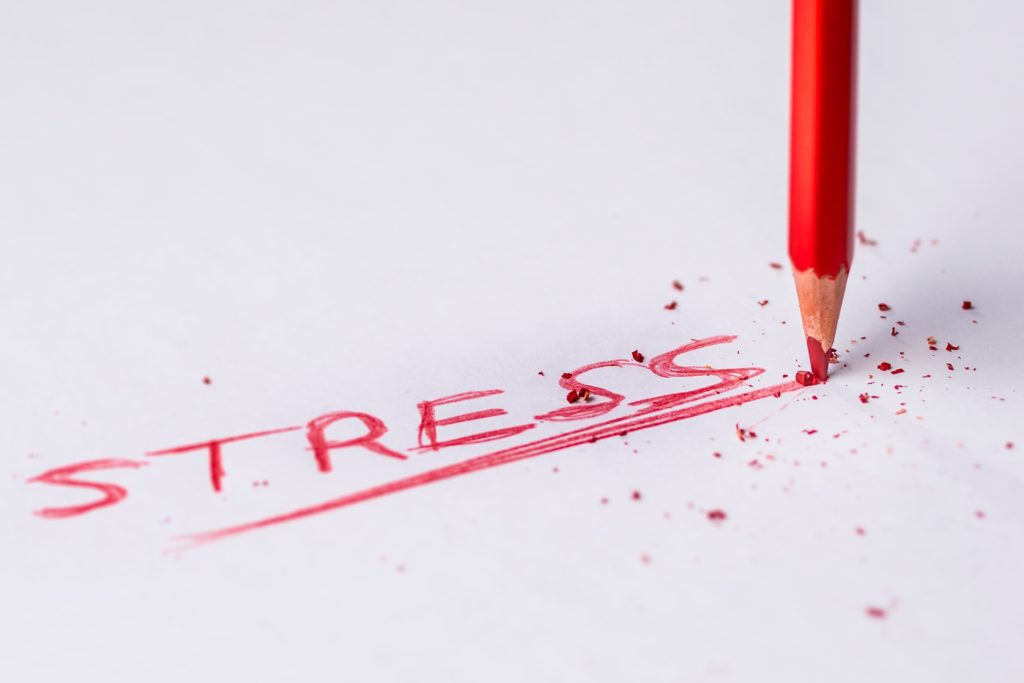How Stress, Good and Bad, Impacts Performance

We live in a fast-paced world. We stack work, training, life, family, mental health, and a whole host of other things into the most amazing pancake tower and cross our fingers that we don’t drop it on the way to the table. Some days we are able to enjoy the deliciousness of it all and other days we are left sobbing as we try to scoop up the pancakes before the dog eats them. Either way, both scenarios involve navigating stress. We usually only think about stress in the dropped pancake scenario. We focus on the negative stress that feels bad to us in the moment and negatively impacts our body and performance. However, there is also positive stress. Positive stressors improve performance and long-term growth. To understand how stress can be both good and bad it’s important to understand the science of stress.
Stress is part of the fight, flight, or freeze response in the body. It is a system designed with the sole purpose of keeping us safe. Some degree of stress is normal and healthy. Think of it as a staircase. At the lowest level, we are managing our day-to-day lives with little to no stress. As we climb the staircase our stress level and therefore, our body’s physiological response begins to increase. The more stress we are under the more the body activates its stress response. The system is flooded with cortisol, adrenaline, and testosterone. Our brain kicks into overdrive, heart rate increases, digestion is slowed, inflammation occurs. The body primes itself to respond with fight, flight, or freeze. Short-term this response is healthy; the body protects itself and then recovers. Long-term the body and mind struggle to maintain this heightened state of arousal and eventually begin to break down.
The stress/training equation game is a complicated one to play. We know the basics to get better we must train/stress our bodies then rest to adapt and reap the benefits of said training. That equation sounds easy enough, but now dump your entire life bucket of stress on top of that. Now things are more complicated. Now we are trying to figure out how it all comes together to impact how we feel before, during, and after each workout. When we are not drowning in life stress, stay within our limits training, and focus on recovery training stress produces positive results. This is how our bodies adapt and gain fitness leading to increases in performance. When we are drowning in life stress, pushing too hard in workouts, and not recovering training stress becomes unproductive. This is when the body becomes unable to adapt and instead breaks down leading to decreases in performance.
Good and Bad Stress Impacts Performance
GOOD STRESS
As much negative press as stress gets it’s sometimes hard to remember that some degree of stress is not only normal but healthy. Having stress means you are engaged in life and care! Aside from training stress that leads to adaptation, there are other positive stressors on your performance.
- Having goals that are meaningful to you can create some motivating stress to reach them. This could look like finding a way to get your workout in even when you lack motivation or know that it requires getting up an extra hour earlier than usual due to that work presentation.
- Being excited going into a race elicits a similar stress response as nerves but can be channeled into increased levels of energy and focus for the event.
- Signing up for your longest race yet leads to you having your highest weekly training volume in preparation. The physical and mental benefits you reap from this feat give you confidence for race day.
- Family vacation takes you to explore new places with your training that add some excitement and maybe even some adaptations if it happens to be in the mountains at altitude.
BAD STRESS
Think of stress as energy reserves. When we use up our energy with stress we limit the energy we have to invest in training, recovery, and life. Increased and prolonged levels of stress lead to loss of motivation, slow recovery times, injury, and burnout. Some examples of bad stress could be:
- Life stresses in the form of working longer hours and not adjusting your training. You’re sleeping less, working through lunch, managing the stress of an important deadline, and still trying to train at the same level. Your body starts breaking down, your easy days feel hard, and you start to lack motivation.
- Negative self-talk. Our minds are powerful tools. If you are beating yourself up with negative comments about your training then your training and performance will be limited not because you are not physically capable but because you cap your potential by lacking self-belief.
- Tying self-worth to results. You have so much of your self-worth wrapped up in your performance that you stress for weeks about race results before even getting to the start line. You show up in the wrong headspace and with enormous pressure that leads to poor performance.
MANAGING THE STRESS/ TRAINING EQUATION
It’s a learning process to figure out your stress/training equation that leads to positive performance but there are a few things you can try that increase the chances of successfully figuring it out.
- Routine/Schedule- having a schedule can help limit some degree of stress by adding a bit of predictability to your daily life. Just be willing to be flexible and adjust when needed.
- Relax and Recover- Build in rest days to your training schedule and explore ways that you feel relaxed! Taking a bath or practicing mindfulness can be ways to relax.
- You do you- focus on your training and your life. Don’t get sucked into the social media comparison game of trying to live someone else’s life and do their training.
- Monitor stress- log your life stress in your training log. Note if you are feeling anxious, sad, have a busy work week.
- Reframe Stress/Positive Self-Talk- learn how to reframe stress from doom and gloom thinking to you being a conqueror over it
- Long Term Vision- remember that taking a step back to account for life stress doesn’t take away from the long-term goal but helps you work towards it in a sustainable way. Focus on long-term, gradual adaptations.
Each athlete is unique in what causes them stress and how that stress impacts them. Knowing yourself and the impact your unique stressors have on you allows you to build a training plan that fits your life instead of trying to make your life fit your training.

Haleigh Fisher is a Licensed Professional Counselor working with athletes to help them train and live happy by helping them develop mental skills and embrace their strengths. She is a former Division I cross country athlete turned trail runner and uses her experience as a competitive athlete and mental health clinician to connect with clients and help them unlock their potential. Haleigh describes herself as a joy seeker, a trail running adventurer, a celebrator of food, an artist, and a lover of people; thrift shopping; and cupcakes.








